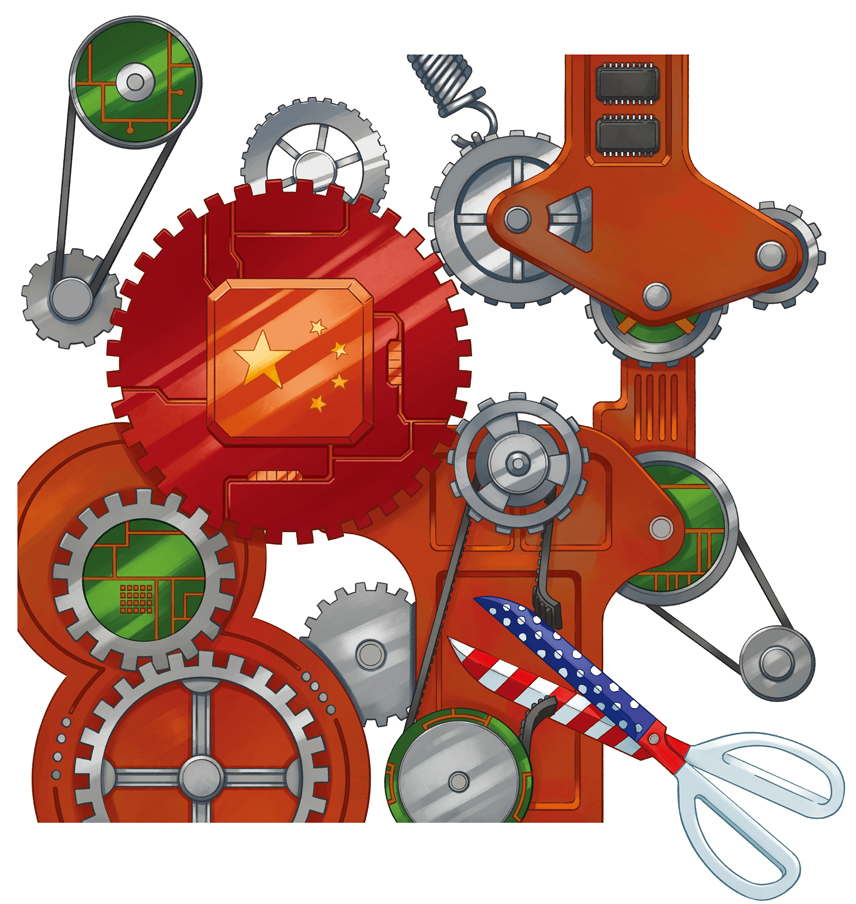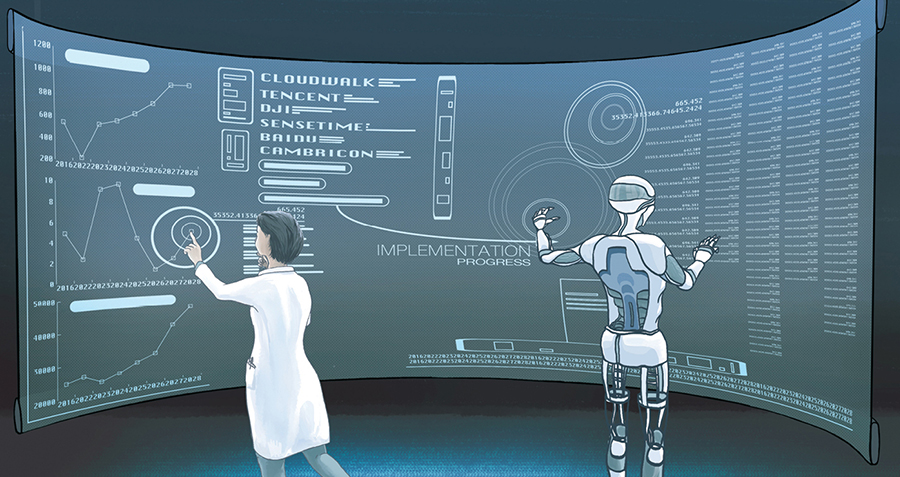With the advent of digital media, traditional print media publishers have struggled to survive. The Economist, however, has bucked this trend and evolved to thrive on both print and digital media platforms. In this interview with Andrew Rashbass, former CEO of The Economist, we learn how the publication has come out stronger despite the disruption in print media.
The last couple of years have been some of the most tumultuous for the world of media. In the early 2000s, the web disrupted the traditional model of print advertising causing major publishing houses to bleed. Disruptive and non-traditional online businesses, such as classifieds website Craigslist, started drawing away advertisers from traditional print publications further denting their business model. That wasn’t all. Next, the web forced publishers to question the relevance of traditional journalism and news delivery as new websites did a better job of breaking news online.
Today, there’s even more to contend with. If the disruptive impact of the web wasn’t enough, today publishers have to contend with a multiplicity of platforms, such as mobiles and tablets that are once again changing the mode of news delivery. Also, increasingly hyperlocal journalism has come into prominence.
Combined, these disruptive forces have led to several casualties. Newsweek, for instance, a very popular news magazine for over eight decades, suffered a fatal blow and finally discontinued its print edition in 2012.
Funnily enough, one publication—The Economist—has somehow bucked the trend of decline in print. The Economist, a magazine launched in 1843, has actually seen its print circulation grow in this tumultuous time. At the same time, it has also launched successful online and digital models that are also growing. The Economist seems to be a classic case of what management theorist Vijay Govindarajan calls ‘Box 1, Box 2 and Box 3 thinking’— manage the present (Box 1), selectively forget the past (Box 2), and create the future with breakthrough innovation (Box 3).
How has The Economist managed to buck the trend and stay relevant to its readers? How has it continued to grow its readership and circulation across platforms? Andrew Rashbass, former CEO of The Economist, attributes this to something he calls ‘lean-back 2.0’ thinking. During a recent visit to China, Rashbass sat down with CKGSB Knowledge’s Neelima Mahajan and explained how The Economist has continued to do well. (Ever since his visit to Beijing, Rashbass has stepped down from his post as CEO of The Economist. He is now with Thomson Reuters as CEO of its news agency and media business):
Q. In the last 10 to 15 years, the world of media has undergone the biggest disruption ever. The Economist, a brand that is 170 years old, has been able to weather the storm and actually come out stronger whereas most other brands have been hit very hard. How have you really managed to stay both relevant as well as profitable?
A. The thing about us as a company is that we are very lucky. Darwin said about evolution, that it doesn’t seek particular goals, it’s just that people who happened to be better, the organisms that are best placed, survive. It is very easy to sit and do the job I do and take all the credit for that. But actually, a lot of our success comes from things that are innate in the DNA of The Economist.
The very first article ever written in The Economist in 1843 was an article about Brazil. Back in 1843, no one was very interested (in Brazil), so the circulation back then was incredibly small. What (has happened) is that we have become relevant. It is not that The Economist has changed to become something different. The thing is that The Economist has always talked about issues around globalization, issues around the interweaving of politics and economics and innovation and science and technology and social trends, and The Economist is all about those connections. We’ve always done (those things). Then the world has kind of moved in our direction and that’s why we are relevant. We haven’t sat there and said that this is happening there in the world, and this is what we need to do to become relevant.
Q. As things stand today, how does your readership vary across the different platforms you are present in—print, online and digital, and how do you see those numbers changing? I’m sure the scales will tilt at some point.
A. A few years ago we identified that digital would be a big issue for us, and actually we had a realization that the distinction was actually not between print and digital, but between what we call ‘lean-back’ and ‘lean-forward’. That’s to say that reading is fundamentally a ‘lean-back’ experience. It’s something where you physically lean back, you spend a lot more time, it’s immersive, you exclude distractions and you concentrate on this thing in front of you. We are finding that people who are reading our digital editions, are actually reading, if anything, longer than they are reading in print. In the case of the web, however, that’s much more a ‘lean-forward’ experience. It’s much more interactive: people are coming not just to hear what we have to say, but to meet each other, to share, to participate, to discuss and to debate.
In terms of the reading experience I had assumed that there would be a migration from print to digital. Our research showed us a few years ago that people expected quite a fast migration from print to digital. What we are finding is that the take up of digital reading is faster than we thought, but it’s not actually happening particularly at the expense of print. We are moving from a single platform world of print to a multi-platform world. What we call multiplatform is that some people are reading print and some people are reading digital.. We actually charge a premium if you want to receive The Economist both in print and digital. Of all our new subscribers, half are choosing to buy the premium offer, and of the remaining half, roughly a quarter (25%) are choosing digital only, 25% are choosing print only and 50% are choosing to have both. So it’s very much more this multiplatform world that we are seeing, and that’s been a bit of surprise to us.
If I’m travelling, I’ll pick up my phone and read (The Economist) on my phone or on my iPad. But actually, I still like print, and that’s not determined by age. Clearly, which digital devices you have is a bit to do with sometimes your age, sometimes wealth and various other drivers. But print actually remains something that young people enjoy. Young people brought up in the digital environment actually find print a bit of a treat, so it’s something that they go back to. If you asked me a couple of years ago before I had the data, how long do I think print has, I probably would have given you a somewhat shorter time span than I would today. There does seem to be even when they are choices, a distinct need and a distinct joy that people get out of the printed word.
Q. And is The Economist an aberration here because for other publications we are seeing the tilt completely towards digital now?
A. It depends on what need you are meeting. The Economist has been this ritual pleasure, this immersed reading experience. If you look at the New Yorker’s numbers you’ll find something similar. Newspapers have gone the other way, and newspapers actually were never really a reading experience. Their basic selling point was ‘we bring you the news’. Today for domestic news, you don’t go to newspapers. You get it fundamentally online. So they have had particularly different experiences.
What isn’t quite clear is what would happen to glossy magazines like the Vogues of this world. They still remain quite powerful in print. It isn’t clear how those experiences will migrate if they do. I don’t think the issues that Newsweek has faced, has very much to do with digital. That’s changed the business model side of it. But I think the engagement that it has with people’s lives, the issues they have had around that—they have not particularly to do with a digital transformation. I don’t think The Economist is an aberration. It is perhaps a particularly good example of the phenomena I’m talking about.
Q. The Economist as it stands today straddles two different worlds—the traditional print, that it has known for almost two centuries, and the new digital world that most publication still trying to figure out. The way you deliver news, analyses and opinions across these two platforms is very different. In print, it’s very one-sided, just giving people what you think. And in digital it’s all about interactivity. How did the transition pan out at The Economist because digital means a whole new way of thinking around content?
A. Yes, so, it does and it doesn’t. We see two very distinct sides to digital as I said earlier—‘lean-forward’ and ‘lean-back’. In terms of the ‘lean-back’ kinds of digital, we believe it is possible to enjoy digital in a ‘lean-back’ way in the same way it’s possible to watch a film on your iPad just the way you used to watch it on TV. So those things can have more similarity to the old world than perhaps the new world. In the case of the web, you are absolutely right. For us it was a recognition that our readers have something powerful to say in their own right and that they are perhaps not quite as interested but relatively or cumulatively as interested in what each other have to say as they are in what we have to say. Therefore, the reason why it was a little bit easier for us is because our audience is so extraordinary: the audience is a meeting of peers. It’s not that we sit on Mount Olympus and give out all these wonderful words of wisdom and everyone at the bottom listens. We’ve always recognized that our audience are themselves incredibly well-read, travelled and experienced people who want to have an opportunity where they can communicate with each other and with us. So we are more of an anomally in that than in the other areas we were talking about just before.
Q. How does your audience profile vary across mediums?
A. They do a bit. In terms of digital editions, historically—we are talking about just a couple of years so it’s hard to say historically—but certainly for something that requires an iPad, inevitably because the iPad is a very expensive thing, you tend to skew actually a little bit older. When people read something on the Kindle, it will skew a little bit older, it will skew a little bit more female. That is the profile of a Kindle reader. The web will typically skew a little bit younger. (The demographics) tend to skew because of the underlying demographic of the consumers of that platform. They are all overlapping circles. They are all our audience. They just have slightly different weightings depending on what the preponderance of usage of that particular platform may be.
Q. Going back to your point of ‘lean-back’ and ‘lean-forward’ and ‘lean-back 2.0’. What really led to your concept of ‘lean-back 2.0’, and why do you think the future lies there?
A. That’s a good question. It was a realization that actually came out of a pre-iPad, pre-tablet, pre-Kindle thinking. It was the realization that came more than 10 years ago that actually The Economist as it stands as a magazine doesn’t really work on the web if you just try to (transport) it. And yet your point about the continued success of The Economist as a magazine, we realized that even before the Kindle or the iPad came along (that) it was meeting a need, (and) our demographic, our audience was getting younger year by year. And yet, the web is taking off and everyone was saying that digital is the future, so we did realize there was something about what The Economist did which wasn’t about the media that it was in or wasn’t overtaken by the web. Even before these digital reading devices came along, we had already identified that there was this special place for reading in people’s lives. As soon as we saw in the first case in 2008, the Kindle, and subsequently the iPad, we immediately saw them as devices that would allow this state of mind, this kind of mental pleasure that people get that could be accomplished in a digital way. In a way it wasn’t that we had a great realization about ‘lean-back’ after these devices came about. We already realized that there was a distinction between the ‘lean-back’ and ‘lean-forward’, originally it was in print and web. And then we realized that this ‘2.0’, this new kind of ‘lean-back’ was coming about through digital media.
Q. It’s interesting you mention the iPad and Kindle. Those devices, which are essentially media disseminators, are becoming extremely powerful and that seems to be blurring the lines between what we know as media and what we know as media-disseminators. How does that change how people like you go about the business?
A. Media companies on the whole have always had intermediaries. So whether or not you think about that as the cable distributers, or as in our case the newsstand providers, we have always had people that have been between us and our customers and helped us to distribute what we do. In broad concept terms, it’s not such an issue. The thing that makes it an issue is not the model per se, it’s the amount of power that is consolidated in a few players which is a big change.
For us, the answer is to work closely with them in a friendly and constructive way, and also to make sure that we have a direct relationship with our customers and our brand is strong, that our proposition is of high quality and relevance. Therefore, what people say is not, ‘I was reading on my iPad but I can’t remember what it was’, but ‘I was reading The Economist. Oh, I think I was on my iPad, I can’t remember if was I on my iPad or was I reading in print?’ Because of the way we go about our business, people still have that primary relationship as far as we are concerned, with us, and secondarily in the channel that they use it from. So if they moved from an iPad to an Android platform, I would like to think if they are an Economist reader they would naturally start reading The Economist on their Samsung tablet just as they have been reading on their iPad or vice versa.
Q. One interesting trend that you have often highlighted is about readers mixing and matching their reading: they read something as sophisticated as The Economist as well as something extremely pedestrian. What are the implications of this trend for publishing?
A. Well, this is quite liberating. The implication is that the audiences that you can reach with sophisticated challenging media are probably much bigger than you thought. If you were saying I was looking for audience that only reads this sort of thing or only consumes this kind of media, you are looking at it in a very narrow way. Once you realize you are looking at a part of people’s lives as opposed to the whole of peoples’ media lives, the market opportunity becomes much broader. That’s obviously very exciting to any business person.
Q. You still derive a huge chunk of revenues from subscriptions. How do you manage to do this at a time when most other publications which were still heavily advertisement-dependent, are really facing a hard time because ad revenues are down and subscriptions are unable to make up for the shortfall?
A. We have always been that way, so again we are very lucky. We have always recognized that The Economist has the potential to be very valuable to people and in order to invest in quality journalism, we need to have a business model that sustains. We are a private company. We don’t have easy access to the equity markets. We don’t have some rich owner who is subsidizing one part of the empire, or other parts of the empire, (which is one) of the ways in which media works in other companies. We have always had to make a living. We (realize that we) have to deliver something of value to people and charge for it. That’s always seemed a much more straightforward model to us, than some of these more convoluted ways that people have to make money. So it isn’t that we have discovered subscriptions that some others have started to do. We’ve always been that way.
Q. How does the advent of online advertising change your advertising model because advertising works differently in print and online?
A. Yes. There’s no question that if a company has been dependent historically on advertising for their profitability in a digital world and in an online world particularly, that is very difficult because there isn’t just profit to be made by publishers compared with others in the online world. It’s about a couple of things. One is about going even more strongly on the subscription side.
Secondly, to make sure that you capitalize on as much digital advertising as you can.
Thirdly, while you continue to have viable successful thriving print product, you continue to get as much advertising as you can. (You also need to recognize) the way in which clients are looking to reach audiences are shifting and make sure that you as a publisher provide the products and services that those clients need to be able to engage with audiences in new ways around content marketing and more innovative ways of marketing alongside advertising.
Q. Moving on to the general media landscape now. From what we have seen happen to brands like Newsweek, the demise of print seems inevitable. It has been different for The Economist though. From your standpoint and the kind of trends that you are seeing in the market today, what is the prognosis for print, and what is the future for publishing?
A. In terms of millions of copies of exactly the same thing produced on paper, put on planes, trains, and automobiles and shipped all around and then put it away in wastepaper baskets, trash cans and pulped. The idea that in 20 years’ time, that that’s (still) going to be happen—millions of copies of exactly the same thing created transported, read and destroyed—that seems unlikely. I don’t think necessarily though that speaks to the companies that currently use that method. It’s about whether their relevance is determined by the physics of the medium in which they deliver. If it is, then they are going to be trouble. But if they actually have a relevance and create value in people’s lives, that has nothing to do with the physical material they are printed on. Then I think it’s probably not the right question to be asking. The underlying issues that people are facing is not paper versus digital, it’s actually the fact that online competitors for certain publications, for instance, are doing the job better, then they were doing it. It has nothing to do with paper.
Q. What do you think to be the next big disruption in media?
A. The one that hasn’t yet played its way through in publishing is the impact of local, social and mobile. You know the way they talk about “SoLoMo” (social, local and mobile). People haven’t yet innovated in ways which really take those three things and create something that is truly a media or a news media experience. We are beginning to see it in Twitter. We are beginning to see it in some of the stories as they break in a different way (than how) news is being gathered and disseminated. But no one has yet turned that into a competitor for mainstream media permanently, (and not just) over particular event. If somebody cracks that, I think that will be a huge disruption. But if I really knew what the next disruption was going to be, then I guess it wouldn’t be nearly as nearly disruptive. That is not the nature of disruption to be able to guess in advance.
Q. How important is the Chinese market for you?
A. In terms of potential (it is) very high. We haven’t cracked China as a media market. It’s quite difficult for foreign media brands to be incredibly successful here. What we try and do here is to help Chinese individuals, Chinese companies to understand the world. We don’t particularly come here to help Chinese people to understand China. We think they understand it a lot better than we do, and there are a lot of other avenues and channels they can go to for that. As Chinese citizens and companies become more and more interested in the wider world, that’s where The Economist group has a real part to play in helping parts of the world to understand and be effective in other parts of the world.
Q. So we won’t see a China-specific edition?
A. The thing about The Economist is that there are no different editions, because there is only one version of The Economist everywhere in the world. So it would be very unusual for us to do a China-specific version. In terms of a Chinese language version, I would like to think there’s a way in which we could get there. We just haven’t worked it out yet. I hope one day we can. That’ll be great, but at the moment we are just not clever enough to know that.

















